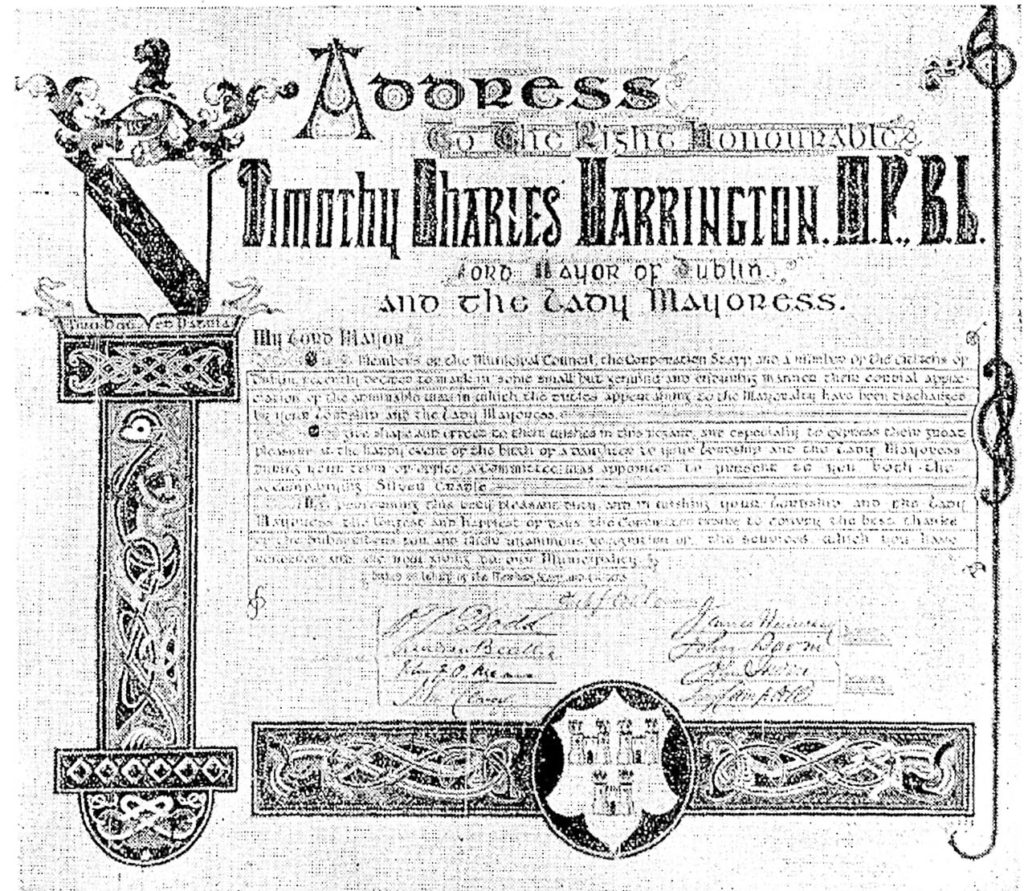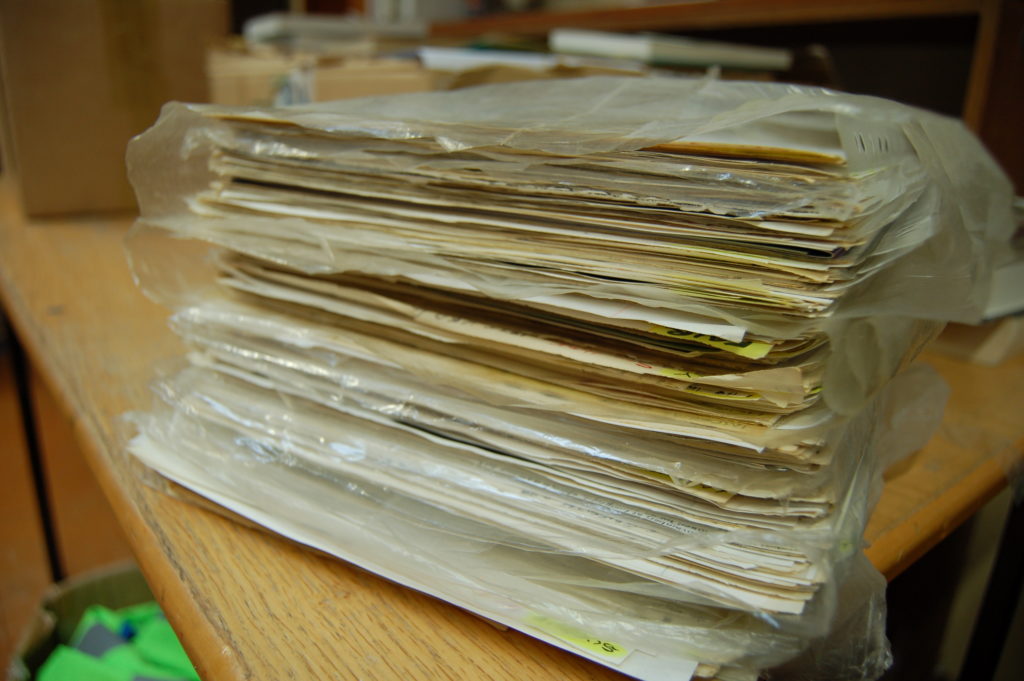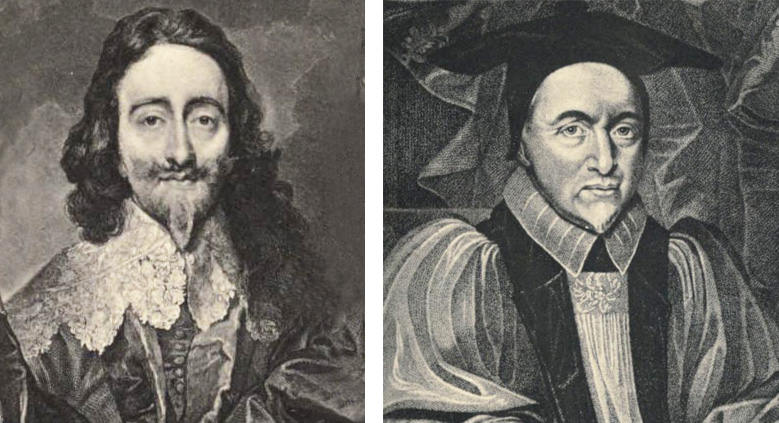Michael O’Donohoe’s detailed study of Timothy Charles Harrington’s nineteenth century newspaper, the Kerry Sentinel, might be described as the heart of the O’Donohoe Collection.1

It is, essentially, an A-Z of Castleisland-related people and subjects in the nineteenth century.2
The subjects, which run over many hundreds of pages, are varied and numerous. By way of illustration, IE MOD-55-55.1-55.1.33 relates to moving bogs and bonfires, ’50 young men prosecuted for lighting bonfires, St John’s Eve, first time ever’ and IE MOD-55-55.1-55.1.7 to agricultural events including Kerry dogs at the Agricultural Dog Shows.
Another document IE MOD-55-55.1-55.1.11 describes a sermon, ‘Beware of false prophets amongst you’ preached by Fr Allman and IE MOD-55-55.1-55.1.13 holds reports of shopkeepers raided for arms and subsequent arrests in Brosna and Ballymacelligott under the Curfew Clause of the Crimes Act.

In document IE MOD-55-55.1-55.1.37 record is found of the death (at age 80) and funeral of Mr Maurice Brick of Caherbreagh. A separate item on the same document relates to electric gondolas on Killarney lakes.
A document about the Merediths of Dicksgrove includes the proposed sale of the Meredith residence at Tiernagoose in 1855 and genealogy of the Meredith family, including the family’s interesting associations with the Powell and Juxon families.3
Juxon in history
Juxon resided at Caragh Lodge near Killorglin (now Liebherr’s Ard na Sidhe).4 It is an unusual name to find in county Kerry – it recalls the dramatic life of Archbishop Juxon who attended Charles I at the scaffold in 1649.

King Charles, in his last moments, handed the archbishop his Lesser George (afterwards the Juxon George) and asked him for his cap of white quilted satin into which the archbishop tucked the king’s hair before decapitation.5

It is hoped that this fascinating and indeed, prized part of the collection, will be accessible online in 2017.
__________________________
1 IE MOD/55. The Kerry Sentinel was founded in Nelson street, Tralee in 1878 by Castletownbere born Timothy Charles Harrington (1851-1910), MP and Lord Mayor of Dublin with the following agenda: 'In presenting to the People of Kerry a new Catholic Journal, independent of all influences hostile to their Faith and Freedom, we believe we but supply a want already much felt. In a County where ninety-six per cent of the population is Catholic, the absence of an Independent Journal to advance Catholic interests, is no less an evil than a reproach'. It was later edited by his brothers Edward (1854-1902), who wrote poetry under the pen-name 'Jot', and Daniel (1839-1915) and Daniel's son, Joseph, the first four-page twice weekly issue costing three-pence appeared on Friday 26 April 1878. The paper was suspended in summer 1918 'until such time as matters are more favourable' (though the printing works, raided in 1919, continued). It seems not to have reappeared. An image of an address of congratulations presented to Timothy Harrington during his Mayorship (1901-1904) was published in the Irish Press, 16 October 1934. 2 IE MOD/55. The material is concentrated mainly but not exclusively on the late nineteenth century period, organised alphabetically and, to aid cross reference, chronologically. The alphabetical item is ordered as follows: A-C; D-H; I-L; M-O; P-R; S-W. The chronological item is ordered by year, 1878-1899 with the omission of 1895. 3 IE MOD/55/55.1/55.1.202. Richard Meredith (1803-1857) of Parkmore and Dicksgrove, who was fond of quoting his motto, Sapere Aude (have courage to be wise) married Louisa Ann, daughter of Major George Plastow Juxon in 1825. A son, William Edward Meredith (who married Frances, daughter of John Powell of Sandville) was born in August 1826 and the following month, Louisa died at the home of her father, Major Juxon, aged just 22. She was buried in the family vault at Castleisland. William Edward Meredith died at Castleisland 1 Jan 1867. His widow, Francis, died at Parkmore, Castleisland on 27 June in 1915 at age 93 at which time she was described as 'one of the most amiable and charitable of ladies of boundless charity who had read the daily papers a few hours before the end came'. William's son, Richard Juxon Meredith, born 1854, of Parkmore and of the National Bank, Castleisland, married Louisa Beatrice, daughter of Thomas Morris of Tralee in October 1886 and had issue. Louisa died at Parkmore in June 1893, shortly after the birth there of a daughter, who survived only two days. Richard Juxon Meredith died on 12 August 1918 at Driffield, East Yorkshire, described as former manager of National Bank, Mallow. Major Juxon, who seems to have served for a time with the Irish Brigade, served under his Royal Highness the Duke of Kent. The major retired to Caragh Lodge, Caragh Lake, near Killarney with his family where he died on 5 May 1841. Major Juxon's widow Elizabeth died at New Street, Killarney in May 1844, 'bowed down with sorrow for the successive loss of a most interesting family'. The loss of her daughter, Louisa Ann, in 1826 was followed by the death of another daughter, Maria Jane Juxon, an artist who died from cholera in March 1834 and was buried at Killeagy churchyard near Muckross. A third daughter, Jane Plastow Juxon, also died the year before her father. Jane married Edward Huggins Esq of the Pavillion, Old Manor House, Nevis, West Indies and died from apoplexy at Newhaven, United States, on 24 August 1840; her husband died there a few months later, on 18 October 1840. They had four children, including a son George Juxon Huggins, born in 1821. The death of youngest daughter, Georgiana Gertrude Rawlins, occurred in early May 1844 very shortly before Mrs Juxon's own demise. Georgiana, who had married Richard Ecclestone Scott Esq, son of David Scott of Courtwood Lodge, Co Laois and grand-nephew of Richard, 3rd Viscount Boyne in the new church of Aghadoe on 7 April 1842, succumbed to measles and died at the residence of her husband in New Street, Killarney (Richard seems to have remarried to Mary Hutton in March 1846 and died in July of that year). It is worth noting that the death of Lieutenant Juxon, 6th Veteran Battalion, was recorded in April 1845. On the death of 'celebrated Angler of the Laune', Paddy Deady, at the age of 70 in October 1860 it was said, 'Oh for the days of Juxon and of Runn when after a long day's piscatory pleasure on Carah Lake, Paddy would sing Paddy Deady O to the air of Kelvin Grove'. 4 After the death of Major Juxon in 1841, Caragh Lodge was advertised to be let the following year (apply to Mr F Maybury, Killarney). Captain Oliver Day Stokes was subsequently in residence and in 1861, Sir William White, son of Captain White of Cork, grandson of Rev Arthur Hyde, rector of Killarney and nephew of Rev Henry Boyle Hyde, curate of Killarney, lived there for a short time. He died on 17 September 1861 from a heart attack while shooting game on the nearby mountain ranges at Barna na Guihaa at age 42. Hotel Ard na Sidhe stands on the site today and is operated by Killarney Hotels Ltd, a division of the Liebherr Group. It was established in 1961 when application for a hotel licence was granted to Gerhard Dietzel, Managing Director of Hotel Europe, Killarney. Among its first guests was West German Foreign Minister, Dr Heinrich von Brentano, who had lunch there in June 1961. The building dates to the early twentieth century and was constructed as a residence by Lady Edith Susan Gordon (as described in her 1934 memoir, The Winds of Time) where she resided with her husband until about 1928, when the house contents were auctioned. Lady Gordon was married in 1897 to cricket historian, Sir Home Gordon, Baronet Embo. When Lord and Lady Gordon entertained over 160 school children from the local Glounaguillagh (at Glannagilliagh) boys' and girls' National Schools there in 1909, it was described as 'Ardeene – their summer residence'. In 1907, Sir Gordon wrote of Kerry, 'From a veranda I overlook a lake, once part of the domain of the M'Carthy More. Seldom can nature have more admirably massed her scenic effects ... They are so very poor these Kerry folk; yet in quite small towns the sumptuous chapels are vast enough to deserve the title of cathedrals, and gold sanctuaries and magnificent altars in edifices of many marbles are visited by barefooted worshippers' (from an article in the National Review, 1907). The couple had no issue and the Embo title became extinct on the death of Sir Gordon in 1956. Lady Gordon, later of Ballyin, Lismore, Waterford died on 28 August 1945. See the collection for an image of Lady Gordon's gardens at Ard na Sidhe taken in 1921. Names associated with Ard na Sidhe from 1928, when the Gordon family vacated the property, to the purchase of the hotel by Liebherr in 1961, include Mrs J O'Connor and Mr and Mrs Roddick. Brigadier-General Marcus George Roddick, Distinguished Service Order (DSO), 10th Royal Hussars, son of George Roddick of The Hook, Northaw, co Hertford married in 1943, as her third husband, to Muriel Rose, daughter of Sir Archibald Mitchelson (Marcus was married earlier to Perena Grace, daughter of Sir Edward Ernest Pearson). The following notice was published in October 1965: 'Mrs Muriel Rose Roddick of 13 Boulevard Princesse Charlotte, Monte Carlo, widow of Brig Marcus George Roddick, DSO, of Ard na Sidhe, Caragh Lake, Co Kerry and formerly of the White Hermitage, Old Windsor, Berks, died on January 8 last, domiciled in Monaco, leaving estate in Great Britain valued at £28, 819 gross'. The couple were also of Toureen Wood House, Cahir, Co Tipperary, sold in 1958 to F L Hennessy, US. Toureen Wood was formerly the hunting lodge of the Lords of Cahir. See the collection for image of Toureen Wood House. 5 From a paper by Mr H S Cuming discussing the relics of Charles I read at the British Archaeological Association meeting in 1855. The satin cap, after passing through various hands, came into the possession of Crofton Croker; it was sold at the dispersion of Croker's collection for £3 15s in 1854. Bishop (William) Juxon (1582-1663) of The Manor House, Little Compton, Gloucestershire (now Reed Business School). Further reference, A History of the George worn on the Scaffold by Charles I (1908) by Sir Ralph Payne-Gallwey. 'The Juxon George is reputed to be the Garter badge which Charles I wore on the morning of his execution. It was then surrounded by diamonds. The diamonds are no longer in their setting. Neither is the portrait of Queen Henrietta Maria on the reverse. It was this jewel that the king handed to Bishop Juxon on the scaffold with the word, Remember!' (exhibition in London in 1934). Juxon (later Jackson) genealogy in Memoirs of Archbishop Juxon and his Times (1869) by Rev William Hennessey Marah, pp3-16. On the death at Stoke-Green, Bucks in November 1755 at over 100 years of age of Mrs Sarah Heywood, widow of Thomas Heywood Esq (First Page of the Bed-chamber and Closet-keeper to King James the Second who 'closed the King's eyes' on the day of his master's death, and who continued in the same post for Chevalier de St George), it was remarked that her maiden name was Juxon, and she was grand-niece of Archbishop Juxon.


